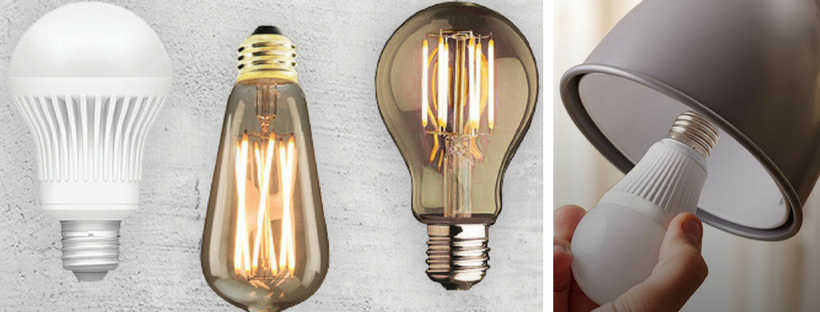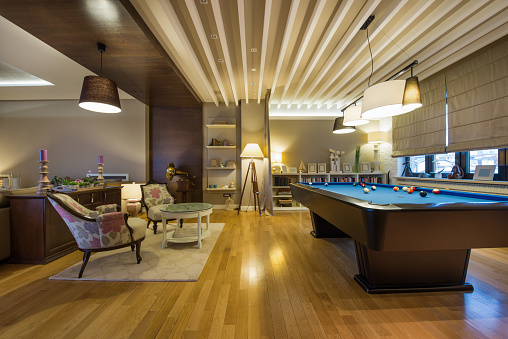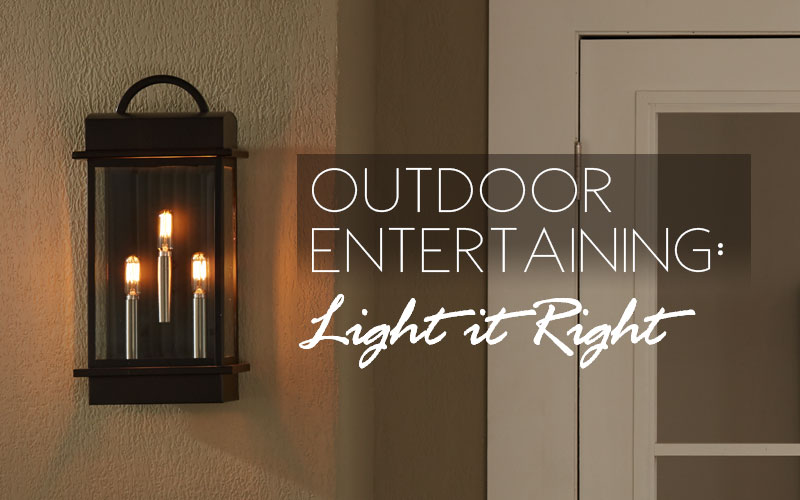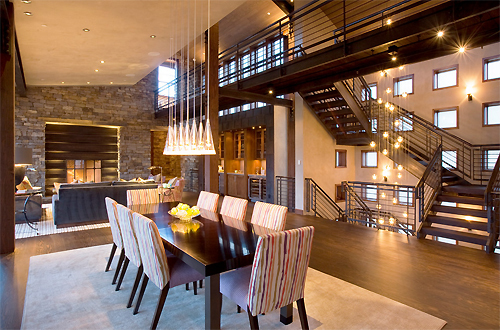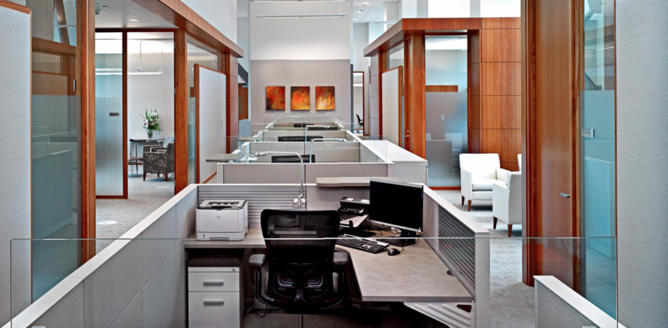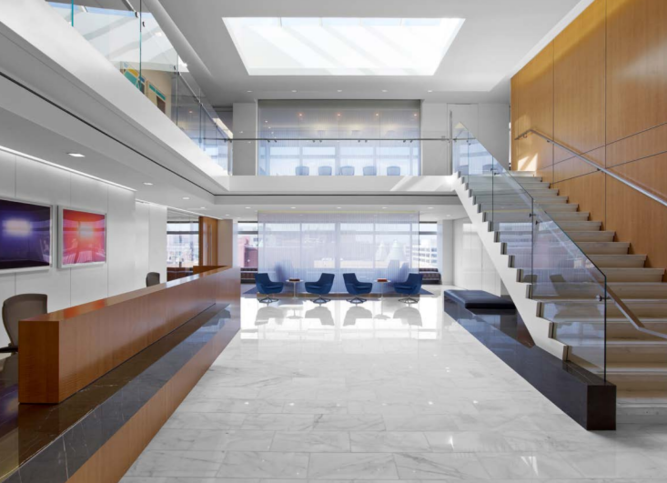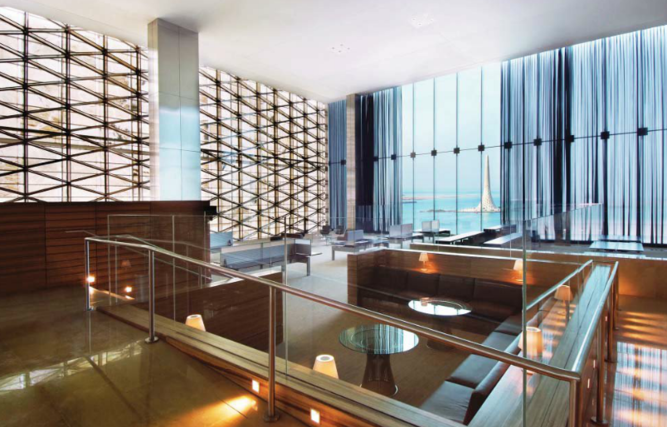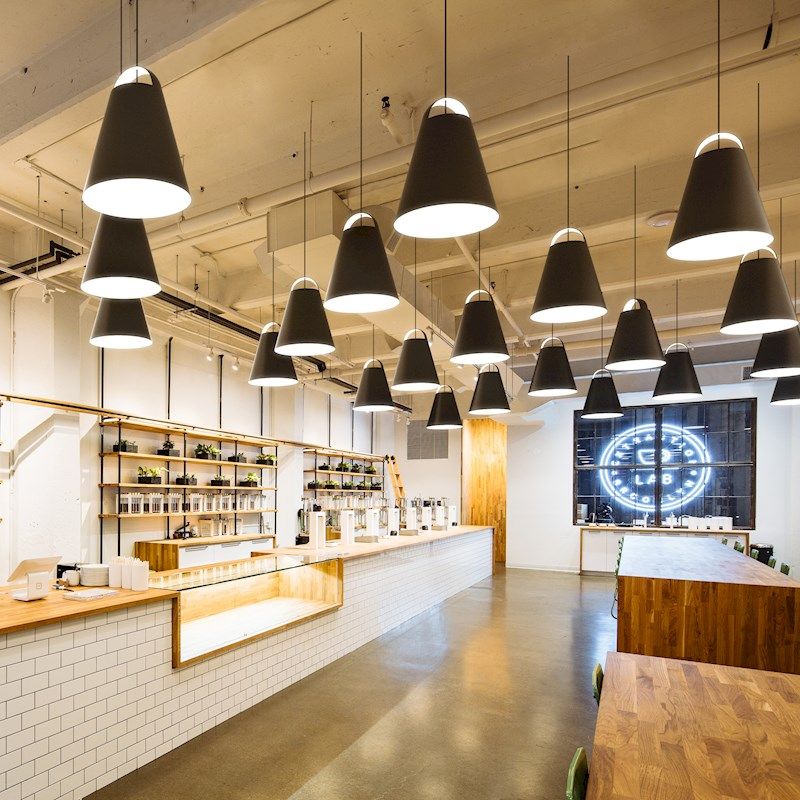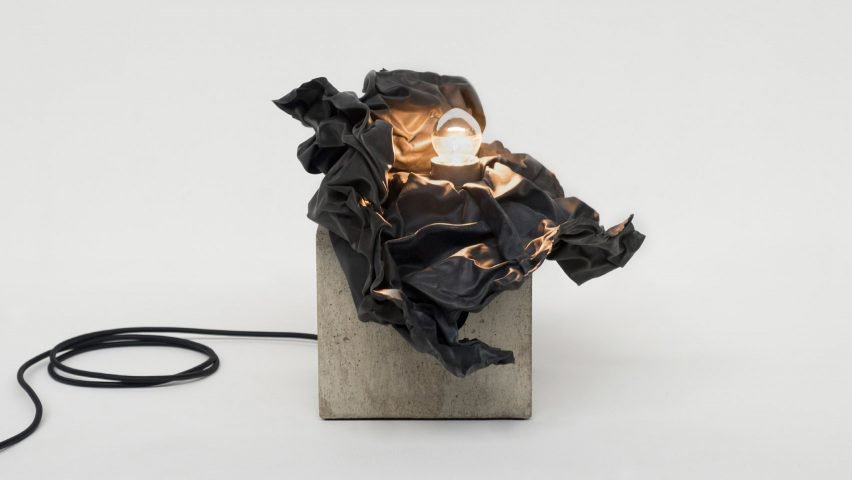You’ve pored over every detail of your new business: You’ve created a business plan, worked up a marketing plan and devised an airtight budget. Now that you have checked all the boxes, it is time to focus on your business’s interior.
While it might not seem very important – one big component of planning your business’s layout is the lighting. While the type of lighting you install in your store may seem insignificant, it can actually make or break a customer’s shopping experience. The type of lighting you use affects the “feel” and mood of your store, so it is very important to get it right. For example, no one wants harsh, fluorescent lights in their dressing room, nor would you expect to see dim lighting in a bakery.
The following guide will help you understand different types of light bulbs, various kinds of lighting and the situations or businesses that they are appropriate for. It will also help you choose the best type of lighting for your business, taking into consideration your budget and merchandise.
Types of lightbulbs
There are four different types of light bulbs designed for indoor lighting: incandescent, halogen, fluorescent and LED. Each type of lightbulb has its place and pros and cons. Many business use combinations of light bulbs to achieve overall lighting for their store.
Incandescent
Incandescent light bulbs are typically inexpensive and emit a nice, warm light in all directions. However, they lack energy-saving properties, so they may hike your energy bill. They also have relatively short lifespans, so you may find yourself replacing them frequently, which is a hassle for any business owner.
Incandescent light bulbs are good for general lighting; however, due to the cons listed above, many business owners forgo incandescent lights in favor of more efficient bulbs
Editor’s Note: Need a POS system for your retail store? If you’re looking for information to help you choose the one that’s right for you, use the questionnaire below to have our sister site, BuyerZone, provide you with information from a variety of vendors for free:
Halogen
Halogen bulbs are the figurative big brother to incandescent light bulbs. Like standard incandescent light bulbs, halogen bulbs produce a soft glow in all directions. However, they use significantly less energy, so they are a more environmentally friendly option that will also soften your energy bill. Their biggest downside is that, like a standard incandescent, they have short life spans and cost more than a standard bulb.
Fluorescent
Fluorescent light bulbs are cost-effective and long-lasting. On average, fluorescent bulbs last 10 times longer than incandescent bulbs. This saves you money and the hassle of constantly replacing your light bulbs. Since they are typically energy efficient as well, you will save money on your electric bill.
However, many people shy away from fluorescent bulbs because they tend to cast a harsh light and are not appropriate for many retail settings. Further, while the brightness of incandescent and halogen bulbs can be controlled from a switch panel, fluorescent lights have a set brightness that cannot be customized.
LED
LED stands for light-emitting diode bulb. These versatile bulbs emit different colors of light while omitting directed light. These bulbs also deliver high performance in all situations; they brighten instantly even in extreme temperatures and can last for many years without needing to be replaced. The biggest downside of these bulbs is their higher-than-average price.
Types of lighting
There are four primary types of lighting to consider for your store: general, task, accent and decorative. As with light bulbs, you will most likely integrate a combination of different types of lighting to achieve the overall look you want for your business’s lighting. It will depend on the type of business you run and the feel that you are going for.
General lighting
General lighting, also called ambient lighting, is the main type of lighting that you use throughout your store. When choosing ambient lighting, it’s important to select a light source that illuminates your store so that it does not feel dim or gloomy but also doesn’t overlight the room, which can create a harsh feeling throughout your store.
When choosing ambient lighting, consider the type of business you operate. If you have a coffee shop, you don’t want harsh lights shining down on people while they enjoy their coffee or chat. If you own a toy store, you do not want customers struggling to see the merchandise.
Task lighting
As the name indicates, task lighting is mainly used in areas where you or your customers perform certain tasks. It is good to use task lighting near the entrance of your store, at checkout and in certain areas throughout the shop. It is a good idea to install task lighting after you have installed your general lighting so that you can more easily find the areas that you need to highlight with additional brightness or effect.
When setting up task lighting in your store, it is important to not overlight the area. Too much task lighting eliminates its effectiveness and minimizes the significance of the areas. It can also confuse customers and overstimulate their vision.
Accent lighting
Accent lighting can add special flair or “oomph” to specific areas in your store. For example, if you have jewelry or another product behind the counter, you can use accent lighting to highlight these products. Typically, store owners use spotlights or track lighting to highlight certain areas of their stores.
Be careful when using brighter lights in your store, however. Placing bright lights where they might shine in your customer’s eyes can cause problems and lead to customers leaving the store before buying anything.
Decorative lighting
Decorative lighting allows you to have a little fun. Unlike the other lighting sources listed above, decorative lighting is purely ornamental. Perhaps during the holiday season, you hang up strings of lights. While a strand of colored light bulbs doesn’t illuminate much throughout the store, it can go along way toward setting the tone or mood of your business. Other decorative lighting sources that are not seasonal include chandeliers, ornamental lamp shades, wall lights, etc.
Decorative lighting can give your store some much-needed personality; however, avoid overusing decorative light fixtures. Your store could look cluttered or, worse, the decorative pieces could cancel out the functional lighting.
Other considerations
While the type of business you run largely determines the types of lighting (and bulbs) you select, there are other things that you must consider: namely, your budget.
In an ideal world, you would be able to buy any type of lighting you want for your business, including a decorative crystal chandelier. The reality, however, is that when you are selecting lighting, you must consider the upfront costs of the light fixtures as well as the long-term maintenance they require and the energy bills that will accrue. Other things to analyze include the following:
Consider the long term
When choosing light bulbs, it might be tempting to select the cheapest option upfront. However, saving money now may cost you more down the line. Inexpensive incandescent light bulbs have to be replaced frequently. Not only that, but the U.S. and many other countries are phasing out these types of light bulbs because they are so inefficient.
Get a second opinion
There is nothing wrong with enjoying a sales pitch. However, do research on your own to determine if you are getting the best deal for your business. Even the most high-tech LED light bulbs (and the nicest line of track lights) may not be the best fit for your store.
Learn how to layer light
Layering different kinds of light will help you achieve the best look and mood for your store. Not only will it help you highlight different products in your storefront, but it also gives your store warmth and dimension. Layering light can be tricky. Before purchasing expensive lighting, talk to a professional about the best techniques for layering light. It might cost more upfront to consult with a professional, but in the long run, it’s important to get it right the first time.
Article Provided By Business.com
![]() Design Lighting Group offers a large variety of lighting systems, Decorative Fixtures, Recessed/Track, Outdoor Lighting, LED Lighting, Antiques, and more. If you would like to discuss your lighting needs please do not hesitate to call us at 404-351-5010 or email us at info@dlightinggroup.com.
Design Lighting Group offers a large variety of lighting systems, Decorative Fixtures, Recessed/Track, Outdoor Lighting, LED Lighting, Antiques, and more. If you would like to discuss your lighting needs please do not hesitate to call us at 404-351-5010 or email us at info@dlightinggroup.com.
